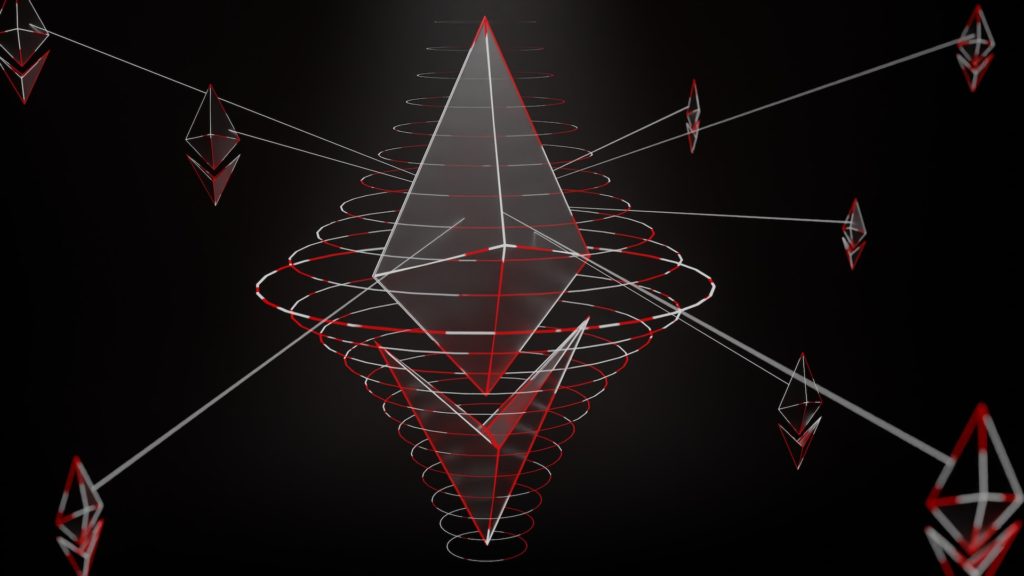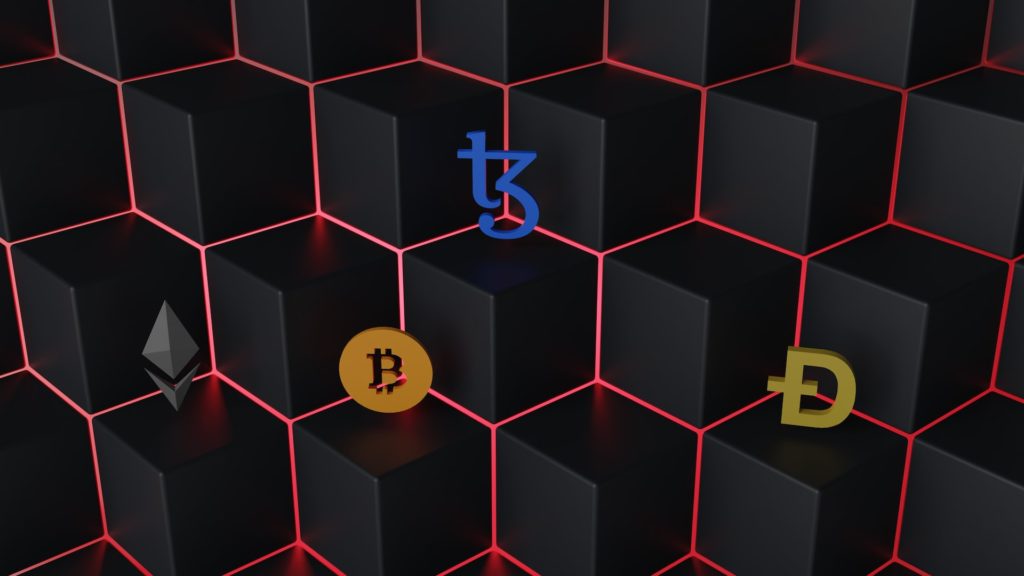Table of Contents
We’re hearing more and more from clients who are excited about the possibilities of Web3, and who want to learn how to embrace decentralized finance (DeFi) or buy a virtual presence in The Sandbox, a decentralized community-driven platform where creators can monetize assets and gaming experiences.
What’s interesting is that many of the same organizations frequently state that they “don’t do crypto.” Can the two, however, be separated?
By discussing the story thus far, we hope to further explain these terms and explore the interconnected relationship between web3, blockchain, and crypto.
Where it All Began (or Close Enough)

We need to go back to October 31, 2008, which happened to be the day that the last batch of blank VHS cassettes rolled off the production line.
It was also the day that a whitepaper under the pseudonym Satoshi Nakamoto was published. “Bitcoin: A Peer-to-Peer Electronic Cash System” is the title of the WhitePaper. Satoshi outlined the mechanism that would allow a fully distributed network to create and validate a transaction ledger in this paper.
It was essentially a system in which a ledger of transactions could be recorded using mathematics and computer science, and everyone who had access to the ledger could have complete confidence in its accuracy. This was the beginning of blockchain technology.
Blockchain
Blockchains are a departure from the traditional method of controlling trust in ledgers, which required a central institution (or institutions) in which we had implicit trust. The institution’s trust is transferred to the ledger’s trust.

The vast majority of money exists only as ledger entries. We trust the ledger because we trust the banks and governments that control it (to varying degrees). Blockchains do not require a trusted institution because control of the ledger is distributed among blockchain network participants.
Bitcoin became a reality on January 9, 2009, but it remained largely unknown and worthless until July 2010, when it “jumped” to $0.08. This was followed by a slow and choppy price decline from $1,164 to $245 by October 2015. The sustained price rise in Bitcoin began in January 2016, and it has since accelerated. Bitcoin became a mainstream investment in 2017, rising to $18,940 by December 2017 before plummeting to $3,190 in 2018. The price of Covid increased to a high of $68,649 in 2021.
However, the volatility of Bitcoin’s value has made it difficult to use as a currency (why would you spend $100 on something that could be worth $1000 in a year?). It has been used for short-term trading gain and as a mechanism for anonymous transaction, often for nefarious purposes.
Bitcoin is now being accepted as a form of payment all over the world, and El Salvador has made it legal tender in an effort to reduce the transaction costs of citizens sending money home from abroad. It is also a popular long-term investment option for investors who are not concerned with medium-term volatility.
Beyond Bitcoin

While Bitcoin will always be an important part of crypto-history, it was only the beginning, and not a particularly exciting one. The Bitcoin network has been of limited use due to flaws in its design as well as the reasons outlined above. However, Bitcoin demonstrates that blockchain technology can be used to create a distributed ledger that can be trusted in a trustless world. To validate transactions, we no longer required a trusted central institution.
Following the launch of Bitcoin, several public blockchains were launched, and we began to notice an interesting phenomenon in which blockchains were launched with the intention of solving specific issues in a decentralized manner. Namecoin, for example, was created in 2011 to provide an alternative to the ICANN-controlled internet domain in order to avoid censorship.
It is important to note that distributed nodes must perform work in order for a public blockchain to function. This work may include recording transactions or verifying others’ transactions. This work necessitates the use of computing power and hardware (both of which are expensive), so a public blockchain must include an incentive scheme to encourage users to participate.
As a result, each public blockchain has its own cryptocurrency that it uses to reward those who work on the chain. Public blockchains cannot exist in the absence of cryptocurrencies.
Smart Contracts

The Ethereum blockchain, which supports Turing-complete smart contracts, was launched in 2015.
A contract is a two-party agreement that creates mutual obligations. When certain conditions are met, a smart contract is automatically executed. On a blockchain, all parties can be certain of the outcome immediately, eliminating the need for an intermediary. Turing-complete programming means that the language used to create smart contracts is complex enough to describe any set of circumstances and conditions.
While Bitcoin does support smart contracts, Ethereum was created specifically to be a smart contract platform, and it was the first of several similar blockchains that are now in existence, including Solana and Polygon.
Decentralized Apps

Smart contracts can be combined and layered on top of one another to create applications that meet the needs of users. These applications adhere to the same principles as distributed ledger technology. The application is not controlled by a single party, and the rules governing its operation are recorded as computer code on the blockchain.
Many of these applications, but not all, are related to finance. DeFi – Decentralised Finance – is the name given to this area of innovation (as opposed to TradFi – Traditional Finance).
An example is the best way to understand the use case. Take, for example, Kickstarter, which allows product teams to raise funds to build prototypes and products. A product team established a fundraising goal. Investors pledge funds against the target, which the platform holds in trust. If the goal is met, the funds are released to the product team; otherwise, the funds are returned to the investors.
All of the current transactions with Kickstarter as the trusted third party could be automated and written into smart contracts. A collection of these smart contracts would then comprise the application, eliminating the need for a third party.
An investor would pledge an amount of ETH (the Ethereum blockchain’s currency) against a target. A smart contract would hold that money for a set period of time. If the target is met, all funds held against it will be automatically transferred to the product team. Otherwise, they would be returned to the investors automatically. The costs of verifying transactions and executing smart contracts (i.e. payments to those who do that work on the blockchain) would be paid automatically from investor funds.

What makes this desirable? In many cases, it is not. If we believe that Kickstarter is a good actor who runs an efficient business, with the advantage of being able to return funds without charge because successful funding rounds subsidize their costs, and that everyone is okay with them taking a margin from investment funds to do so, then there is no pressure to move to a DeFi application.
In some cases, however, there may be stronger motivations. Funding Circle, for example, is a peer-to-peer lending platform. They serve as a trusted third party, facilitating lending between investors and businesses (mainly SMEs). As an investor, you can recover funds by having borrowers repay their loans or by selling loan parts to other investors in a secondary market.
Funding Circle unilaterally changed the rules for investors at the start of the pandemic by closing down the secondary market. This turned a relatively liquid asset into an illiquid asset overnight. They have since announced that this change will be permanent, and that they will no longer serve retail investors. In a DeFi application, this would be impossible. The rules would be written in code, and changes would be possible only with the agreement of all participants.
The rate of evolution is one of the most exciting aspects of DeFi. Traditional finance (TradFi) moves at a glacial pace. Sometimes it’s excruciating. DeFi and blockchain technology can evolve quickly to optimize and solve problems, as well as develop new features to support more applications that provide a broader range of services.
Apps other than decentralized finance include games, social media sites, and marketplaces… The rise of decentralized applications outside of finance has given rise to the term Web3.
Web3

The original World Wide Web was a platform for information dissemination. This is now referred to as Web 1. Web 2.0 was defined by the rise of social media and user-generated content (e.g., Facebook, YouTube).
Gavin Wood, the co-founder of Ethereum, popularized the term “Web 3.0.” It refers to the notion that blockchain technology will power a new era of decentralized applications, taking control of content and data away from a small group of Big Tech firms and placing it in the hands of users. It will use cryptocurrencies and tokens as a medium of exchange and will operate largely outside of government control, free of censorship.
Why it Matters…
These technologies are here to stay and are already causing havoc in industries. The first signs of change can be found in finance, payments, lending, and credit. We are witnessing disruption in gaming, art, and social media, but this is only the beginning. The smartphone world is in the year 2002… The iPhone is still five years away, but it is on its way, and we are only now beginning to imagine the potential applications.
Disclaimer: The opinion expressed here is not investment advice – it is provided for informational purposes only. It does not necessarily reflect the opinion of EGG Finance. Every investment and all trading involves risk, so you should always perform your own research prior to making decisions. We do not recommend investing money you cannot afford to lose.
 English
English Français
Français Español
Español Bahasa Indonesia
Bahasa Indonesia 中文 (中国)
中文 (中国) Русский
Русский Português
Português Deutsch
Deutsch

